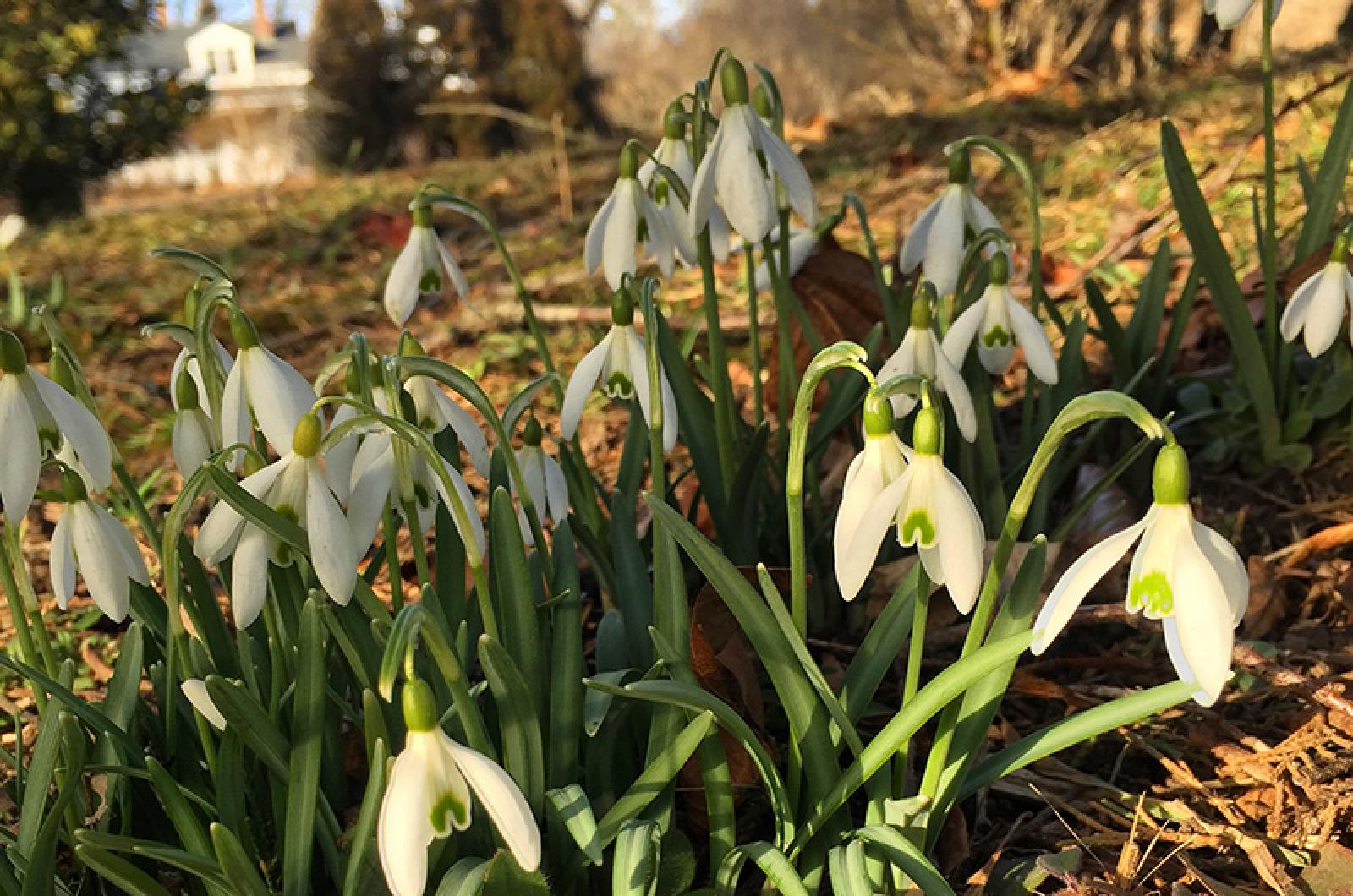Shirtsleeves in January. Spring flowers in February. Buckets of rain, but no snow and ice.
A single snowy owl. A dearth of sea ducks.
Weather patterns on Martha’s Vineyard this winter have been strange, as they have been across much of the U.S. and around the world. On the Island too, the natural world appears to be slightly off kilter. Sure, we’ve seen snowdrops in February before — even January — but the early arrival of hardy spring flowers seems to be accompanied by other shifts, perhaps more subtle. Snowy owls, which have been wintering on the Vineyard in large numbers for much of the past decade, are suddenly scarce this year. Legions of expert Vineyard bird watchers have been keeping a protective eye on the lone snowy that showed up this winter, so much so that the owl’s exact location is not being reported.
Meanwhile, a veteran duck hunter who spent the month of January on Chappaquiddick arrived with his gear and trusty water spaniel, but was surprised and disappointed when he encountered few ducks in the marshy, brackish places that rim the south shore of Edgartown and ordinarily are full of wintering sea birds. Bird news reports published weekly in this newspaper also reflect the trend.
Are these changes due to global warming?
The National Oceanic and Atmospheric Administration (NOAA) is already reporting that this could be the warmest winter in recorded history in the U.S. Climate scientists have been tracking an Arctic weather pattern that is trapping cold air in the polar region. The phenomenon, known as Arctic oscillation, has the effect of strengthening the jet stream, and is affecting weather systems around the globe.
Hence hurricanes in the U.K., shuttered ski resorts in Japan, and a lone snowy owl on Martha’s Vineyard.
One warm winter? A lovely break from mufflers and puffy jackets.
But the habit of marking time by nature’s clock is deep in the Island psyche.
Please sleep a little longer, pinkletinks.




Comments
Comment policy »